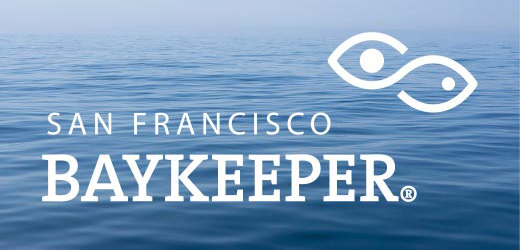
Baykeeper recently started, in collaboration with the San Francisco Estuary Institute (SFEI), the first-ever pilot program aimed at quantifying the amount of plastic floating in the Bay. As part of this endeavor, I went out on the Baykeeper boat with SFEI staff to trawl near the shorelines of San Francisco, Alameda and Contra Costa Counties to collect micro-plastics floating in the water.
Micro-plastics are plastic particles smaller than 5 millimeters. They comprise a large portion of all plastics in the marine environment. Although San Francisco Bay is largely considered one of the most heavily studied estuaries in the United States, never before has an effort been made to determine the how much plastic is in the Bay. In fact, while trash is an issue of growing concern for all urban waterways, only recently have efforts been made to determine how much trash is reaching California's bays and estuaries. In Southern California, regulators have now established Total Maximum Daily Loads (or TMDLs) intended to reduce trash in Los Angeles River and Ballona Creek, and a similar plan is under consideration for San Francisco Bay.
The goal of our study is to quantify current levels of plastic in the Bay, assess whether it's a cause for concern and eventually judge the success of efforts to reduce it. For instance, under the 2009 San Francisco Bay Area Municipal Regional Stormwater Permit, cities are required to reduce the amount of trash entering the Bay – but there isn't yet any data to use to determine whether those efforts are effective.
To capture the micro-plastics, we used a device known as a manta trawl, which is essentially a fine net attached to an aluminum frame – shaped like a manta ray – that skims the surface of the water (studies indicate the majority of plastic within marine and estuarine environments floats at the surface). The Algalita Marine Research Foundation in Long Beach, California, was kind enough to offer one of the devices they use to measure plastic concentrations in the Pacific Gyre, sometimes referred to as the Pacific Garbage Patch.
The samples collected from this initial outing are being analyzed by Joel Baker's lab at the University of Washington Tacoma, which has also studied micro-plastic concentrations in Chesapeake Bay, Puget Sound and the Pacific Ocean. Using NOAA guidelines, we can quantify the relative concentration of plastic particles in terms of the total amount of debris collected, as well as the concentration of plastic debris within the volume of water that passes through the trawl.
The results of our pilot project should be available soon.
